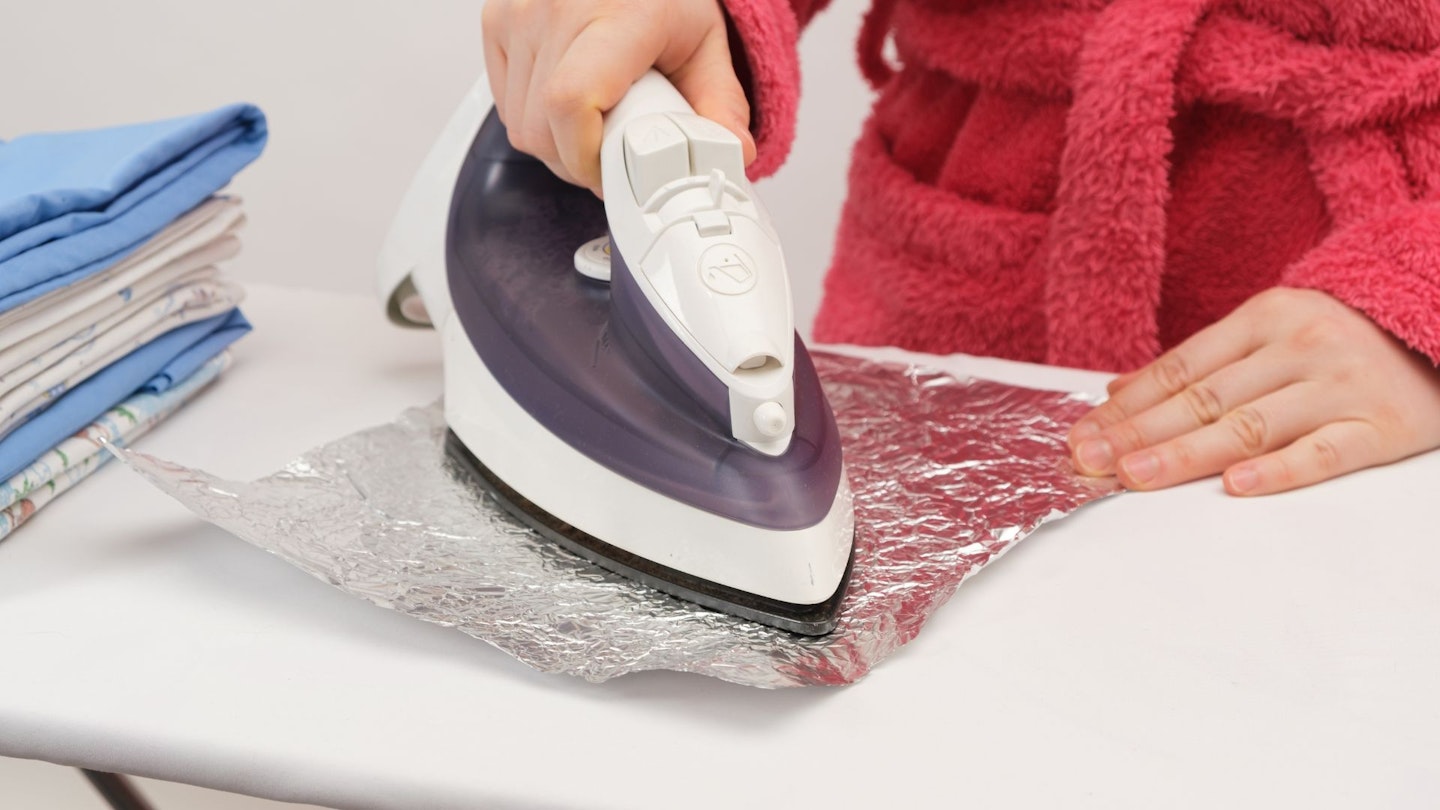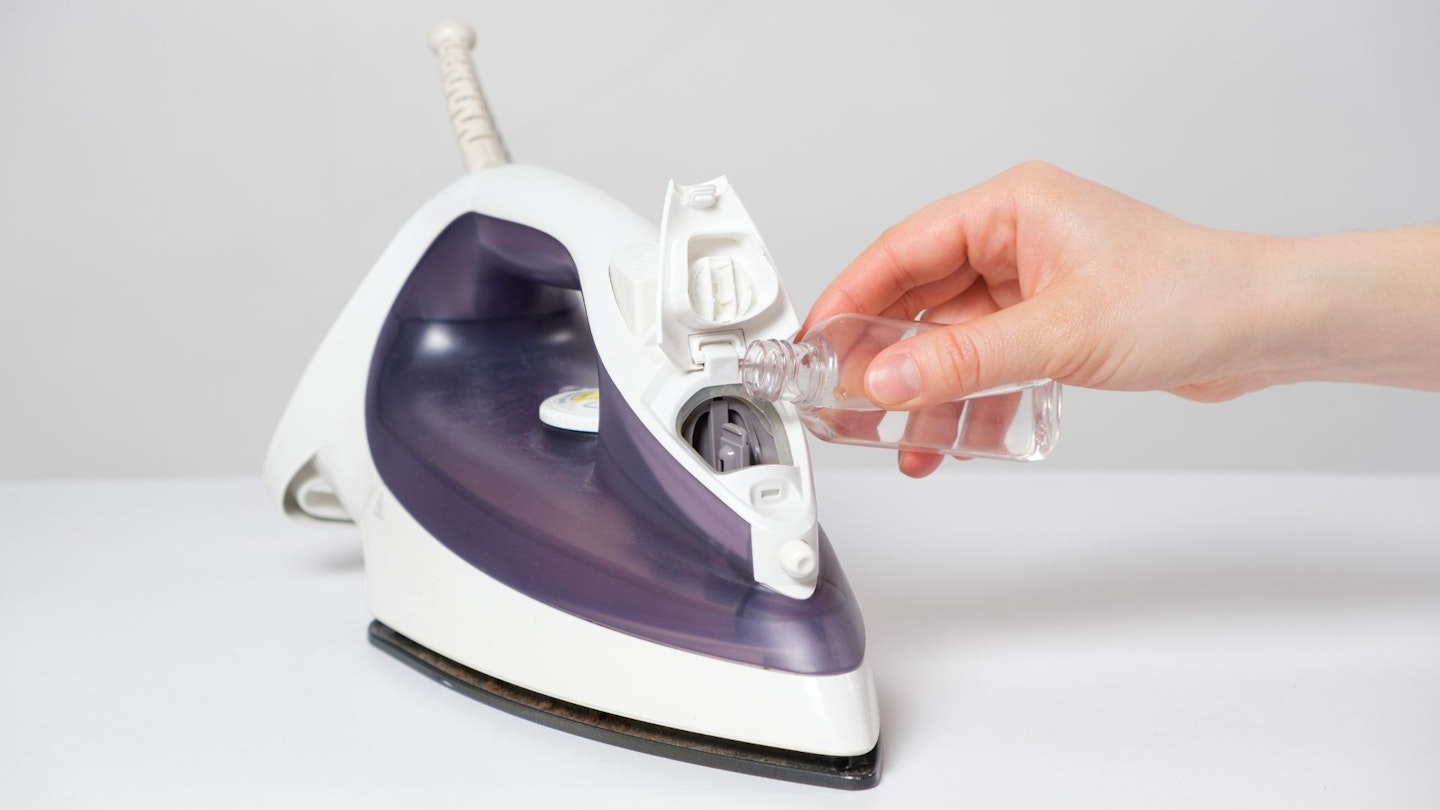Home appliances are often forgotten during our usual cleaning routines which can lead to build-up of dirt or dust, compromising its performance and efficiency. But we have the best expert tips when it comes to details like keeping your washing machine clean and the best oven cleaning hacks. Irons are something that is often overlooked and if you’ve been wondering how to clean an iron without damaging it, we have the answers.
Even the best cordless irons can gather stubborn stains which could transfer onto your clean clothes. Even dirt that is inside your iron can cause damage. However, that’s no reason to toss it and buy a new one. Whether you prefer using eco-friendly cleaning products or giving it a good scrub, our top tips can help keep your iron sparkling clean and good as new.
How to clean an iron soleplate
First, and most importantly, you must clean your soleplate. The soleplate is the bottom of the iron that comes into contact with your clothes, so naturally you want it to be as clean as can be. However, even with the best steam irons, this is where the steam comes out of, making it prone to a build-up of limescale and burn marks.
The first step to cleaning this part of the iron is to make sure the iron is unplugged and completely cooled. As an extra step of precaution, ensure the inner chamber is emptied of water as well. There are several methods to clean the soleplate of an iron, so here’s a list of our tried and tested tips.
1. How to clean an iron with vinegar
We all know that using white vinegar for cleaning is very efficient, but did you know that you can also use it on your iron?
Step one is to soak a towel in vinegar. Then, place the iron soleplate face down on the towel. Remember, your iron should be switched off and completely cooled for this step. Let the iron sit and soak for 30 minutes. After this wipe down any excess vinegar on the iron with a dry cloth.
2. How to clean iron plate with toothpaste
We love homemade cleaning products and a toothpaste is another product found in your cupboard that has many uses.
Add a small amount of toothpaste to the soleplate of the iron. Using a cloth or toothbrush when needed, spread the toothpaste by rubbing in small, circular motions. Remove the toothpaste with a cloth. For any excess, refill the iron with water and use the steam function to clear the surface of the soleplate.

3. How to clean an iron with salt?
Switch your iron to the hottest setting. Spread out a newspaper or brown paper bag on your ironing board. Sprinkle some salt over the newspaper. Iron the salty newspaper in gentle circles. This is sure to get out any stubborn stains.
4. The baking soda method
Bicarbonate of soda is yet another ingredient that has so many uses, including cleaning. For this method, create a paste by combining two tablespoons of baking soda and one tablespoon of water. Rub it around on the iron plate. Wipe it clean and turn it on for a quick steam to get rid of any excess.
5. Using a cotton swab for hard to reach places
Dip a cotton earbud in white vinegar. Use this swab to get into the grooves of the steam holes to break down any grime.
6. The paracetamol method
This is the only method in this article that requires your iron to be hot. By switching the iron on and letting it heat up, it helps loosen and melt the stains, allowing the paracetamol to work its magic.
Switch off the iron but complete the next step while it is still hot. Using a tweezer so as not to burn your hands, pick up a paracetamol tablet and run it over the stubborn stains on the soleplate.
Allow the iron to continue to cool down and wipe off any excess with a damp cloth.
7. The dryer sheet method
Switch the iron to its lowest setting. Grab a dryer sheet and rub it all over the soleplate. Once the dryer sheet gets too hot, throw it away and use another. Repeat this method until the iron is clean. Use a towel to remove any residue from the sheets.
8. The nail polish remover method
This hack is best used outside as you’ll be dealing with chemicals. Dip a cotton ball in acetone nail polish remover. Using an oven mitt or a heat-protecting glove, swipe the cotton ball along the surface of the hot iron.
9. The soapy water method
This is useful if your iron only needs a light clean. Scrub the soleplate with a sponge dipped in soapy water. Don’t use wire wool as it will damage the plate.
10. The tin foil method
Lay a large sheet of aluminium foil on your ironing board. Iron over the sheet on a hot setting to remove hard water stains.

11. The ice-cube method
This trick helps if your iron has come into contact with anything plastic, and is most effective if you stop and try it straight away while the plastic is still hot.
Fill a shallow bowl with ice cubes. Place the iron plate-down into the ice to freeze and harden melted-on plastic, this will usually take around 10 minutes. Once the plastic is fully hardened, use a blunt plastic knife- never metal, as it will damage the soleplate- to scrape the plastic spot away.
12. The self-clean method
Many irons will have a self-cleaning function, so be sure to check your manufacturing manual to see if this is the case.
13. The store-bought method
Most shops sell a paste specifically made for cleaning iron soleplates.
14. How to descale an iron?
It isn’t just the outside of the iron that needs a little TLC, descaling an iron is a vital part of cleaning it. To do this
Mix equal parts distilled white vinegar.
Pour the mixture water into the iron’s water tank.
For any stubborn limescale build up, dip a toothbrush in pure vinegar and gently scrub.
Switch on your iron to steam for about five minutes.

FAQs
Can a dirty iron stain clothes?
In short, yes they can. If you neglect your iron stains will transfer onto your clothing, however, these are rarely permanent.
How do I know it’s time to clean my iron?
Good Housekeeping compiled the following list of signs that it is time to clean your iron:
Is your iron coughing out chalky white mineral deposits or limescale onto your freshly laundered clothes?
Is there a sticky residue (from ironing fabrics on too hot a setting) melted on to the soleplate (aka, the metal bit)?
Does the iron drag rather than glide?
Does the iron leave behind marks and stains?
How often should I descale my iron?
Most manufacturers recommend descaling your iron every one to four months, and sooner if you notice your iron begins to spit out brown-coloured dirt. How often you clean your iron also largely depends on how often you use it- the more you iron, the more you should be deep cleaning it.
How to clean burnt iron?
You can easily clean a burnt iron using a paste made with equal parts vinegar and baking soda. Dip a microfiber cloth into the paste and rub it in circles over the soleplate. This can be followed by repeating the process by dipping the cloth into water this time to wipe off any of the excess residue. This should effectively remove any burnt stains from your iron.
How do you clean an iron that sticks?
There are several hacks to get rid of stickiness from an iron. You can try rubbing a cloth dampened in warm water and dishwashing soap onto the soleplate. This should be able to remove any stickiness. You can also try sprinkling baby powder on a cloth and rubbing it on the iron while it is cool. You can then iron a waste cloth to remove the powder and the stickiness. Sometimes, ironing paper will also do the trick.
Why is my iron spitting out brown stuff?
Limescale and mineral buildup which clogs steam vents can sometimes result in the iron spitting out brown or yellow water. This reduces the iron’s efficiency and can also stain your clothes. This is why it is important to descale your steam iron regularly.
How do you clean black deposits on an iron?
Create a paste with baking soda and water in 2:1 ratio and apply it onto the iron’s soleplate. Leave it for a few minutes and wipe it off with a clean cloth. This should be able to get rid of the black deposits on an iron.
Sarah O’Byrne has been an editorial assistant at heat, Closer and Yours since May 2023. She has a BA in English with Film and an MA in Literature and Culture - both from University College Dublin.
